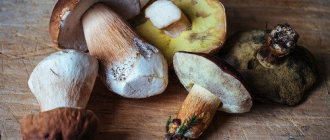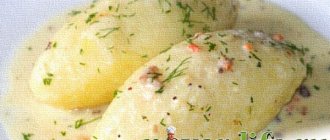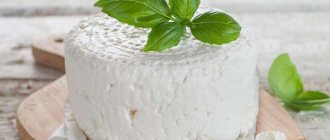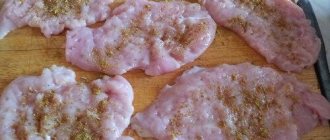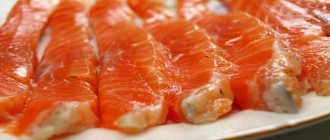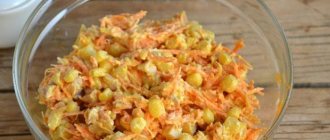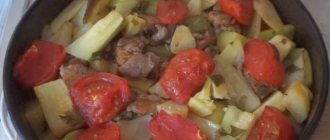Chemical composition and calorie content
Per 100 g of dried green onions there are 218.5 kcal. When dried, onions retain their valuable properties and have a richer chemical composition than frozen ones. In addition, dried herbs include phytoncides, essential oils, a number of B vitamins, phylloquinone, biotin and retinol with ascorbic acid. The product is also rich in fiber and organic acids.
What are the benefits of dried onions?
The benefits of dried onion feathers are due to their rich vitamin and mineral complex. Thanks to phytoncides, the products have a disinfecting effect. Organic acids and fiber stimulate the production of gastric juice, increase appetite and accelerate the elimination of toxins from the body.
B vitamins are responsible for the construction of almost all systems and organs at the cellular level and help improve memory. Retinol helps improve skin condition, and vitamin C increases the body's overall resistance to infections. A large amount of vitamins and minerals helps normalize the water-salt balance.
Important! When using onion seasoning, be sure to take into account the characteristics of your own body.
Dried feathers of the vegetable in question should not be added to dishes during exacerbations of gastritis, kidney, pancreas and liver diseases, as well as peptic ulcers. The seasoning is quite spicy and contains a high concentration of essential oils with acids and phytoncides, which can negatively affect the health of such people, causing severe spasms in the gastrointestinal tract.
You need to be very careful when using the seasoning for bronchospasms and completely exclude it from the diet if you have an individual intolerance to onions. The rate of use of such a seasoning per day is from 15 to 50 g. If the recommended doses are exceeded, indigestion, severe belching, and heartburn may occur.
How to dry green onions at home
There are several ways to dry onions. They involve the use of ovens and electric dryers or drying naturally in the fresh air. The preparation of raw materials, regardless of the chosen method, will be the same. First you need to select the healthiest and densest feathers, without flaws. Then the raw materials should be thoroughly cleaned of dirt and dried films. After this, the feathers are washed and dried on a paper towel. As soon as the greens dry well, chop them into pieces no more than 0.5 cm long.
Did you know? Libyans are champions in onion consumption. The country produces about 33 kg of this vegetable per capita per year.
In the oven
The sequence of actions when drying spices in the oven:
- Preheat the oven to a temperature of +40…+50°C.
- Place the raw materials on a baking sheet in one layer, preferably placing parchment paper underneath.
- Place the pan in the oven and leave for 2-3 hours.
- Every 30 minutes, lightly stir the raw materials with a wooden spoon so that they heat evenly.
- After 2-3 hours, turn off the oven, and when the raw materials have cooled, pour them into a storage container.
In an electric dryer
In electric dryers, shredded feathers are dried on the top rack at a temperature of +70°C. Under such conditions, it is enough to soak the raw materials for 30 minutes. Then you should wait for it to cool completely and put it in a container for storage.
Video: drying greens in an electric dryer
Outdoors
This method is the most common. Place the chopped greens in a thin layer in a sieve, previously covered with gauze, or on a sheet of paper. Dry in the shade, in a well-ventilated place.
You can spread the spice on the balcony. Periodically it needs to be shaken and mixed. With this method of procurement, the raw materials will be ready after 3–5 days, depending on the ambient temperature.
Important! You cannot dry onions in the sun.
If you neglect this rule, the raw materials will turn yellow and lose a lot of useful substances.
Preparing for drying
Leeks will turn out especially well after drying if they are properly prepared for drying.
- If you are going to dry store-bought leeks, you need to purchase them from October to early May. But it’s better to ignore the summer harvest in hypermarkets.
- Samples selected for drying must have white and clean bulbous bases, have a length of more than 8 cm and a thickness of 1.6 cm or more. The legs should not have any bumps or flaws, their shape should be cylindrical.
- The feathers of leeks selected for drying are strong and fleshy, with a rich emerald green hue.
- There are no arrows with a seed pod in the center of each leaf. Otherwise the bow will be too tough.
Choosing the right leek will make drying as comfortable as possible. Such specimens will retain maximum useful properties after processing.
How to store dried onions at home
Such raw materials can be stored for 12 months. For storage, it is placed in dry glass containers and hermetically sealed. Instead of glass containers, you can use fabric bags. Storage conditions:
- lack of light;
- humidity not higher than 65%;
- temperature not higher than +10°C.
You will be interested in learning how to prepare and store green onions for the winter.
If you don't know how to use up excess green onions, you might want to consider drying them for the winter. In this state, the raw materials do not lose their nutritional value and are preserved throughout the year.
Sequence of drying green onions
You can dry any green onion, but thick feathers contain more moisture, so the process may take longer. Greenhouse onions contain fewer useful substances, so you should focus on “garden and field” raw materials. There is a certain dual perception for onions: a large white onion with golden “scales” is considered a vegetable, and thin green feathers are perceived as a herbaceous spice.
The stems-feathers are sorted, the white bases with thin feathers are cut off. Onions are washed under running water; light dustiness is typical for all garden crops.
Wet drops are shaken off the feathers, and the onions are cut fairly finely. The cutting should be based on your preferences: some people like tiny onion squares, others like large pieces.
You can fill one electric dryer tray with whole onion feathers. Having dried such an onion, they grind it with their fingers into the finest powder, which is then used for its intended purpose: added to soup and omelettes, to minced cutlets and pate.
The other two trays are filled with chopped onions. Drying onions in natural conditions, on paper and on a windowsill, can take up to a week, during which the onion pieces will have time to become dusty. In addition, the onion smell will dissipate. An electric dryer is an excellent device for quickly preparing food.
The pallets are placed on top of each other and covered with a lid. The timer is set for 18-20 hours.
Dried onions become brittle and fragile, they crumble at the slightest touch. When pieces of dried onion fall into hot soup, they restore lost “elasticity” and retain their shape.
Top articles: How to prepare and store freshly squeezed juices
Store dried onion slices separately from chopped onion powder.
I think everyone knows well that greens contain many minerals and vitamins that are beneficial for our body. Dill, basil, parsley, arugula, celery, sorrel, and spinach are grown in many garden plots. Greens contain a lot of vitamins P, K, E, micro- and macroelements, dietary fiber, carotene, ascorbic acid, etc. etc. Housewives use greens when preparing almost all dishes; it not only adds benefits to them, but also gives them a wonderful taste and unique aroma. That's why we need it in the kitchen all year round. And summer is the time to make useful preparations for the winter.
Today we will talk about how to properly dry herbs such as dill, parsley, basil and green onions. Of course, fresh greens are healthier than dried or frozen. But it still contains a lot of useful substances for the human body. In addition, it is better to prepare healthy spices yourself than to buy them in bags at the supermarket. After all, it is still unknown what the manufacturers put there.
The most common way to prepare greens for the winter is to dry them. Of course, you can freeze onions, dill, parsley and other herbs, pickle them, or even grow them on a windowsill all winter. But drying is still the easiest and most popular way to preserve herbs for the winter. You can dry it using various methods. The main thing is that it does not turn yellow. Let's look at each of the methods in more detail. You can, of course, simply leave the dill or parsley on the table or hang it directly in bunches on a thread - but this way our herbs will dry for several days. And we will look at faster ways.
